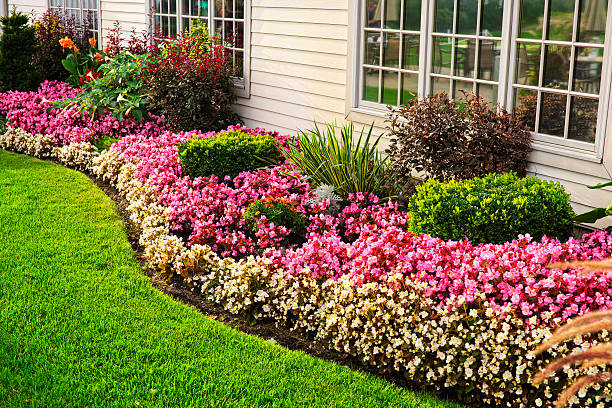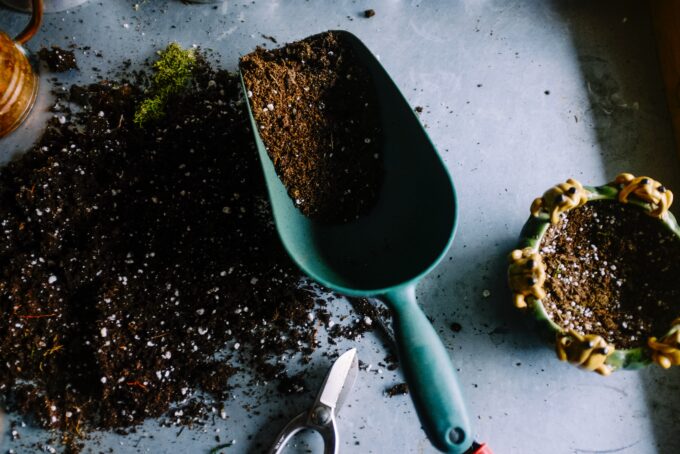Finding the right plants for your landscape or home garden can be a major hassle, with a ton of unforeseen side effects to consider. For those who don’t have the time or money to constantly maintain their space, or hire a team of round-the-clock professionals, it may be worth investing in a drought resistant ground cover to reduce your hands-on hours. Drought resistant plants are not just time-savers, they’re also cost-effective and environmentally friendly, as water conservation has become a key issue in many locales across the globe.
Whether you’re looking to spruce up your yard, bring in a splash of color, or simply lighten the workload of garden maintenance, it’s hard to go wrong with a low-moisture perennial that will bloom without much of a helping hand. Let’s dive into a quick list of drought resistant ground cover options. They should make your life easier, while making your yard the talk of the HOA.
Wooly Thyme
Kicking off our list we have wooly thyme plants. Wooly thyme offers perfect drought resistant coverage for ultra-dry locations that soak up a ton of sun. These fuzzy little plants are some of the simplest to grow, and require almost no maintenance at all after planting. So, they’re ideal for already overloaded home gardeners this summer. In fact, overly wet soil rots this plant. You best bet to encourage a healthy patch is to simply plant it and let nature do the rest.
Wooly thyme tends to remain close to the ground, spreading roughly a foot wide from where it takes root. At max, it’s only a few inches tall. This thick and rugged plant blooms with pink flowers during peak season, offering nectar and nutrients to local bug populations. Unlike other kinds of thyme, however, it is not to be used while cooking.
Sunset Rock Rose
You dig the idea of having beautiful, pinkish flowers blooming in your yard, but want something a little taller and more substantial than wooly thyme. We’ve got the perfect solution. Beyond having the coolest name of any ground cover on this list, sunset rock rose offers comprehensive coverage with a fraction of the effort of most plants. This drought-resistant perennial blooms with thin pink-purple buds. It grows to heights of over 3 feet (0.91 meters) at its peak. The roots that extend over 8 feet (2.44 meters) wide from their base.
During the off season, the roots and stems provide an evergreen sage color. It makes for a perfect backdrop for your home garden. The best part about this particular plant, however, is its resistance to brush fires. This means you can plant this right up against your home to prevent the scorching hot sun from ravaging your yard if you live in a part of the world where such fires are commonplace.
Moss Phlox
As you can likely guess from its name, moss phlox is a type of moss. This drought resistant ground cover forms a wide and dense mat of deep-green coverage for your water-scarce landscape. Depending on which seeds you pick up or what environmental factors are present, this creeping ground cover can produce star-shaped flowers in a variety of vibrant colors. Such hues include white, violet, blue, or pink. One of the hidden features of this slowly-spreading carpet is its resistance to deer. Those tired of the local wildlife running afoul of their backyard will find moss phlox the perfect solution.
The mossy tendrils of this plant only reach heights of 6 inches (15.24 cm) off the ground. Though, the roots are known to spread out into 2 foot wide plots. That means it’s a perfect low-commitment plant for homeowners looking to spread a wide area.
Winecup
If you’re a fan of rap music and poetry, you have no doubt heard the expression “the rose that grew from concrete,” which refers to beautiful things that sprout from seemingly unsuitable environments. Winecup foliage offers exactly that for your landscape. The drought resistant ground cover resides on the rocky edges of roadsides across the American Midwest.
Winecup blooms bright, luminous magenta flowers through the Summer. But, the tough-as-nails foliage will surely bring a clean cut and distinctive look to your garden walls all year round. Overly watered areas ill suit this plant. However, that’s about the only stipulation you need before committing to it. Beyond soil wetness, winecup can survive, and in fact thrive, in just about any condition.
Angelina Sedum
At this point in the list, it bears reminding that most homeowners have one of two distinct reasons for searching for drought resistant covers for their gardens and landscapes. Some may be looking to reduce their overall watering and maintenance time, while others live in dry, arid climates where watering a garden is simply not a realistic possibility. If you fall into the ladder category, your best bet will likely be to pick up some Angelina sedum.
Angelina sedum is a succulent-adjacent ground cover. It thrives near-exclusively in oppressively hot environments like Arizona and parts of Southern California. Like moss phlox, this plant is resistant to deer and even rabbits. This drought resistant ground cover is also a great filler plant for rocky terrain. It even looks amazing on cracked stone walls. Angelina sedum maintains a gorgeous bright yellow foliage which blooms with absolutely no assistance necessary, making it ideal for all kinds of gardening enthusiasts.
Prostrate Rosemary
If you started this list disappointed because you can’t cook with wooly thyme, we’re sure to win you back with our next pick. Not only is prostrate rosemary an impeccable choice as a drought resistant ground cover, it’s also a delicious and flavorful additive for the kitchen! Like other entrants on this list, prostrate rosemary thrives in dry, sunny conditions and requires little to no water to mature. This nectar-rich plant reaches full bloom in the late Summer and early Fall months, sprouting lavender colored flowers which naturally attract a wealth of bees and butterflies.
The drawback to rosemary plants of this variety is their tendency to die in freezing conditions. This coverage is recommended for those in areas that don’t reach sub-zero temps in the dead of winter. Still, some gardeners in the Northern states have taken to growing prostrate rosemary plants in easily transportable containers. Then it’s a matter of simply bringing them indoors during the coldest months of the year.
Periwinkle
If this isn’t your first time searching for drought resistant ground covers, it should come as no surprise that we’ve got periwinkle among our top picks. This blue and white flowering vine is one of the best and most reliable covers for flower beds and garden paths. That’s due to its dense evergreen spread and ability to sprout healthily within shaded areas. If your landscape is perennially devoid of sunshine, you can’t do much better than periwinkle to establish coverage. Still, the species is invasive in some locations. Double-check with your local region before committing to a periwinkle bed.
Blue Fescue
As its title would entail, blue fescue offers an absolutely spectacular shade of blue stems which sprout in a large fuzzy mound. Think of them as giant pom poms budding from the Earth. Though its brightest shades tend to arise in the late Summer months, this perennial ground cover provides a splash of vibrant color all year long. Importantly, it withstands the hottest weather conditions in the entire United States.
Many home gardeners have taken to planting blue fescue in and around stream beds and rock gardens. This gives a sparse but necessary jolt of color to the otherwise flat looking environment. This drought resistant ground cover tends to reach heights of about 1 foot tall, and spreads in excess of 9 inches (22.86 cm) from where it takes root.
popular posts
Spaces
Whether it’s luxury or ease, every area of your home should be as fabulous and unique as you.
FOLLOW ALONG ON INSTAGRAM
#homeandtexture
Find us on social for more home inspiration where culture, personal style, and sophisticated shopping intersect to help you create a home where you love to live.








